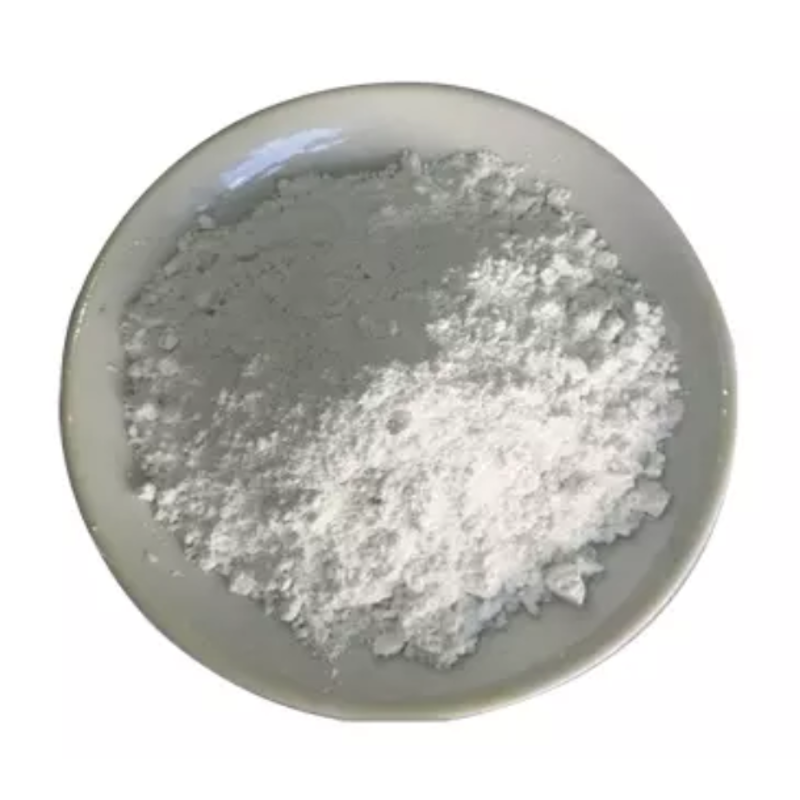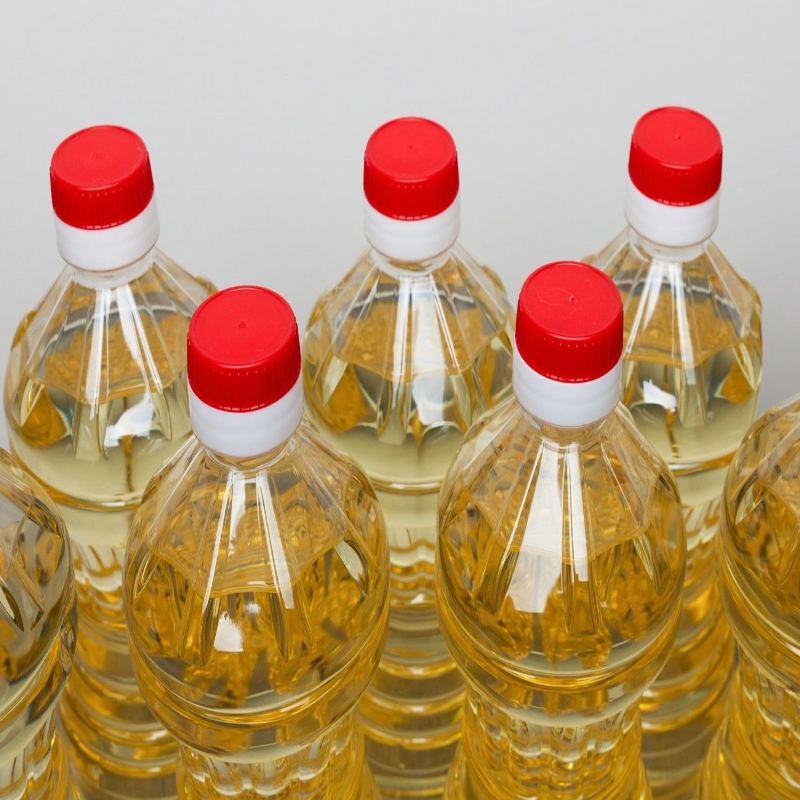The mechanism of action of feeding enzymes and their application in aquaculture
-
Last Update: 2020-06-29
-
Source: Internet
-
Author: User
Search more information of high quality chemicals, good prices and reliable suppliers, visit
www.echemi.com
enzyme is a kind of highly catalytically active protein synthesized by biological cell protoplasm, widely distributed in animals, plants and microorganisms, and plays a very important role in the life process of body growth and reproductionIn the late 1980s, foreign countries began to widely use feed enzymes, the United States, Finland in the 1990s, some feed enzyme products have entered the Chinese market, from china began to feed enzyme research and application, the current application of feed enzymes in livestock and poultry breeding industry has been very common, aquaculture industry also has some reports of the application of enzyme preparationsThe rapid development of aquaculture has brought huge economic profits, but also produced serious pollution of aquaculture water bodies, and the undigested nitrogen and phosphorus in feed constitute one of the main sources of pollution of aquaculture water bodies, so improving the utilization rate of feed and reducing water pollution has become the direction of future efforts of aquaculture workersAs a new type of environmental protection green feed additive, enzyme preparation has the advantages of improving feed digestion and absorption rate, saving protein source, non-toxic, non-side effect, no residue and no resistance, and will play an important role in promoting the development of aquaculture industrybXH
1 The main mechanism of action of enzyme preparationbXH1.1 to reduce the viscosity of the digestive tract, improve the digestion and absorption rate of nutrients constitute the non-starch polysaccharides of plant cell wall, can combine a large amount of water, increase the viscosity of the digestive tract, so that the nutrients and endogenous digestive enzymes can not be fully exposed, reduce the digestion utilization rate of protein, starch and other nutrientsThe addition of enzyme preparations to the feed can destroy the hydration membrane around the diet, increase the contact surface of the ate and enzymes and small intestine, and improve the digestion and absorption rate of nutrientsbXH
1.2 Improve the utilization rate of phytic acid phosphorus Most plant feed and grain phosphorus in the form of phytic acid phosphorus, because of the lack of endogenous phytic enzymein in aquatic animal digestion system, can not use phytic acid binding phosphorus in feed, resulting in invalid phosphorus discharge into the water body caused pollution, and phytort enzyme use, can be phytic-binding phosphorus into effective phosphorus for the use of animals, so as to improve the utilization rate of phosphorus in the feedbXH
1.3 Anti-nutritional factors in the elimination of anti-nutrient factors in feed feed are widely present in various feed raw materials, they directly or indirectly affect the digestion and absorption of nutrients and metabolism, and enzymes can partially or completely eliminate the adverse effects of these anti-nutrition factorsbXH
1.4 The deficiency of the supplementary endoenzyme, the ability of animals that activate endogenous enzyme seismostium or animals in a state of stress such as disease is weak, and the proper addition of proteases, amylase and lipase to the feed can supplement the deficiency of endogenous enzymes, improve feed utilization rate, and also promote the secretion of endoenzymes bXH
2 The classification of feed enzymes is different due to the different sources of enzyme preparations bXH
2.1 Classified by mechanism of action
bXH 2.1.1, water-decomposing enzyme (also known as digestive enzymes) these enzymes mainly include protease, amylase, lipase, cellulase, phytoase, pectin ase bXH
2.1.1.1 Protease is a hydrolysis enzyme that degrades the protein peptide chain, mainly gastric protease, trypsin, papaya protease and so on bXH
2.1.1.2 Amylase amylase can be divided into alpha-amylase, beta-amylase, isoamyase and glycosase But the main roles in feed are alpha-amylase and glycosase Alpha-amylase is an endoenzyme, which can break down most of starch into moderate and low-molecular substances that are easily absorbed, and glycoenzyme is also an endoenzyme, which can further hydrolyze the medium and low-molecular substances that the alpha-amylase decomposes into glucose and are absorbed and utilized by animals bXH
2.1.1.3 Lipase Lipase is the general term of triglyceride enzymes in hydrolyze fat molecules and is used less often in feed bXH
2.1.1.4 Cellulase cellulase is a complex enzyme consisting of a variety of hydrolysis enzymes, according to the differences in enzyme function, divided into three categories: C1 enzyme, also known as glucolyse endosoenzyme, acting on insoluble cellulose surface, random hydrolysis beta beta -1,4 - Glycoside bonds; Cx enzyme, also known as glucose extrosozyase, acts on the end of the cellulose linear molecule, hydrolysis beta-1, 4-glycoside bonds; BG enzyme, which can be fiber disofone, fiber triscose water hydration into glucose molecules bXH
2.1.1.5 Phytic asse Phytase is a new feed additive developed and applied in recent years, which can be released from plants by catalytic hydrolysis reaction, thereby increasing the utilization rate of phytic phosphorus bXH
2.1.1.6 Pector astrose pectin is an anti-nutrition factor in plant-based raw materials, which affects the utilization rate of feed, and pectinase can effectively destroy pectin and promote the digestion and absorption of nutrients 2.1.2 Oxidase oxidase oxidase refers to the enzymes involved in the reduction of organic substances, mainly dehydrogenase and cytochrome oxidase, etc , not much use in feed bXH
2.2 Classified by formulation type
bXH 2.2.1 single enzymes such as amylase, lipase, protease, cellulase and phytoase bXH
2.2.2 Compound enzyme preparation is a mixture of two or more bioactive enzymes, compound enzymes can simultaneously degrade a variety of anti-nutrition factors in the feed, maximize the nutritional value of feed, is also the most commonly used enzyme preparation bXH
3 Because aquaculture animals relative to livestock and poultry relative to relatively low, digestive function is not very sound, the digestion and absorption rate of nutrients is low, so the addition of enzyme preparations is very necessary, and from the application effect, feeding enzyme preparations did play a role in improving feed utilization, promote growth, but it should be noted that the use of enzymes with the breeding object, the role of the environment, etc bXH
Enzymes are a kind of highly catalyticly active protein synlytic synthesis of biological cell protoplasm, widely distributed in animals, plants and microorganisms, and play a very important role in the life process of body growth and reproduction In the late 1980s, foreign countries began to widely use feed enzymes, the United States, Finland in the 1990s, some feed enzyme products have entered the Chinese market, from china began to feed enzyme research and application, the current application of feed enzymes in livestock and poultry breeding industry has been very common, aquaculture industry also has some reports of the application of enzyme preparations The rapid development of aquaculture has brought huge economic profits, but also produced serious pollution of aquaculture water bodies, and the undigested nitrogen and phosphorus in feed constitute one of the main sources of pollution of aquaculture water bodies, so improving the utilization rate of feed and reducing water pollution has become the direction of future efforts of aquaculture workers As a new type of environmental protection green feed additive, enzyme preparation has the advantages of improving feed digestion and absorption rate, saving protein source, non-toxic, non-side effect, no residue and no resistance, and will play an important role in promoting the development of aquaculture industry bXH
1 The main mechanism of action of enzyme preparation bXH 1.1 to reduce the viscosity of the digestive tract, improve the digestion and absorption rate of nutrients constitute the non-starch polysaccharides of plant cell wall, can combine a large amount of water, increase the viscosity of the digestive tract, so that the nutrients and endogenous digestive enzymes can not be fully exposed, reduce the digestion utilization rate of protein, starch and other nutrients The addition of enzyme preparations to the feed can destroy the hydration membrane around the diet, increase the contact surface of the ate and enzymes and small intestine, and improve the digestion and absorption rate of nutrients bXH
1.2 Improve the utilization rate of phytic acid phosphorus Most plant feed and grain phosphorus in the form of phytic acid phosphorus, because of the lack of endogenous phytic enzymein in aquatic animal digestion system, can not use phytic acid binding phosphorus in feed, resulting in invalid phosphorus discharge into the water body caused pollution, and phytort enzyme use, can be phytic-binding phosphorus into effective phosphorus for the use of animals, so as to improve the utilization rate of phosphorus in the feed bXH
1.3 Anti-nutritional factors in the elimination of anti-nutrient factors in feed feed are widely present in various feed raw materials, they directly or indirectly affect the digestion and absorption of nutrients and metabolism, and enzymes can partially or completely eliminate the adverse effects of these anti-nutrition factors bXH
1.4 The deficiency of the supplementary endoenzyme, the ability of animals that activate endogenous enzyme seismostium or animals in a state of stress such as disease is weak, and the proper addition of proteases, amylase and lipase to the feed can supplement the deficiency of endogenous enzymes, improve feed utilization rate, and also promote the secretion of endoenzymes bXH
2 The classification of feed enzymes is different due to the different sources of enzyme preparations bXH
2.1 Classified by mechanism of action
bXH 2.1.1, water-decomposing enzyme (also known as digestive enzymes) these enzymes mainly include protease, amylase, lipase, cellulase, phytoase, pectin ase bXH
2.1.1.1 Protease is a hydrolysis enzyme that degrades the protein peptide chain, mainly gastric protease, trypsin, papaya protease and so on bXH
2.1.1.2 Amylase amylase can be divided into alpha-amylase, beta-amylase, isoamyase and glycosase But the main roles in feed are alpha-amylase and glycosase Alpha-amylase is an endoenzyme, which can break down most of starch into moderate and low-molecular substances that are easily absorbed, and glycoenzyme is also an endoenzyme, which can further hydrolyze the medium and low-molecular substances that the alpha-amylase decomposes into glucose and are absorbed and utilized by animals bXH
2.1.1.3 Lipase Lipase is the general term of triglyceride enzymes in hydrolyze fat molecules and is used less often in feed bXH
2.1.1.4 Cellulase cellulase is a complex enzyme consisting of a variety of hydrolysis enzymes, according to the differences in enzyme function, divided into three categories: C1 enzyme, also known as glucolyse endosoenzyme, acting on insoluble cellulose surface, random hydrolysis beta beta -1,4 - Glycoside bonds; Cx enzyme, also known as glucose extrosozyase, acts on the end of the cellulose linear molecule, hydrolysis beta-1, 4-glycoside bonds; BG enzyme, which can be fiber disofone, fiber triscose water hydration into glucose molecules bXH
2.1.1.5 Phytic asse Phytase is a new feed additive developed and applied in recent years, which can be released from plants by catalytic hydrolysis reaction, thereby increasing the utilization rate of phytic phosphorus bXH
2.1.1.6 Pector astrose pectin is an anti-nutrition factor in plant-based raw materials, which affects the utilization rate of feed, and pectinase can effectively destroy pectin and promote the digestion and absorption of nutrients 2.1.2 Oxidase oxidase oxidase refers to the enzymes involved in the reduction of organic substances, mainly dehydrogenase and cytochrome oxidase, etc , not much use in feed bXH
2.2 Classified by formulation type
bXH 2.2.1 single enzymes such as amylase, lipase, protease, cellulase and phytoase bXH
2.2.2 Compound enzyme preparation is a mixture of two or more bioactive enzymes, compound enzymes can simultaneously degrade a variety of anti-nutrition factors in the feed, maximize the nutritional value of feed, is also the most commonly used enzyme preparation bXH
3 Because aquaculture animals relative to livestock and poultry relative to relatively low, digestive function is not very sound, the digestion and absorption rate of nutrients is low, so the addition of enzyme preparations is very necessary, and from the application effect, feeding enzyme preparations did play a role in improving feed utilization, promote growth, but it should be noted that the use of enzymes with the breeding object, the role of the environment, etc bXH
Share it on feed
This article is an English version of an article which is originally in the Chinese language on echemi.com and is provided for information purposes only.
This website makes no representation or warranty of any kind, either expressed or implied, as to the accuracy, completeness ownership or reliability of
the article or any translations thereof. If you have any concerns or complaints relating to the article, please send an email, providing a detailed
description of the concern or complaint, to
service@echemi.com. A staff member will contact you within 5 working days. Once verified, infringing content
will be removed immediately.







